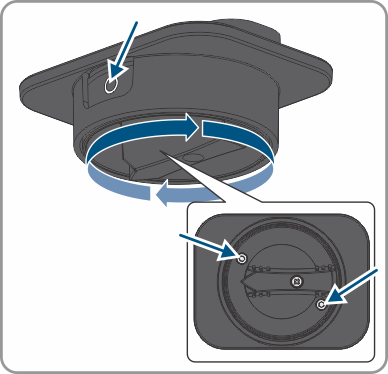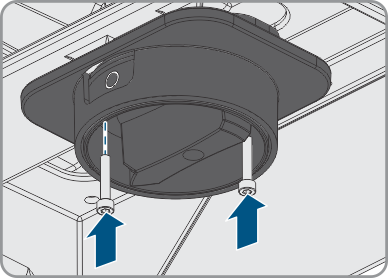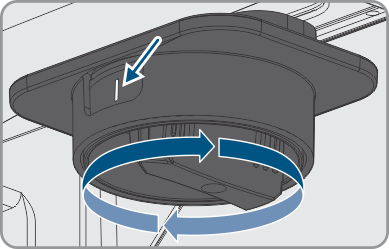Commissioning the Inverter
 Qualified person
Qualified person
Requirements:
- The inverter must be correctly mounted.
- The circuit breaker must be correctly rated and mounted.
- All cables must be correctly connected.
- Unused DC inputs must be sealed using the corresponding DC connectors and sealing plugs.
- The country data set must be set correctly for the country or the purpose.
- Unused enclosure openings must be sealed tightly. The factory-mounted filler plugs can be used for that purpose.
Procedure:
- Make sure that the AC cable is routed so that it cannot be damaged by the partition in the lower enclosure lid.
- Insert the lower enclosure lid from above and flip it down. The screws must protrude from the lower enclosure lid.
- Tighten all six screws with an Allen key (AF 3) in the order 1 to 6 (torque: 2.0 Nm ± 0.3 Nm). By tightening the screws in the prescribed order, you avoid warping the enclosure lid, which would keep it from sealing correctly. Tip: If the screws fall out of the lower enclosure lid, insert the long screw into the lower middle hole and the five short screws into the other holes.
- Set the DC load-break switch to position O so that both mounting screws are visible.
- Insert the DC load-break switch firmly into the recess on the inverter. During this process, the DC load-break switch must still be in position O and aligned so that the screws are positioned over the threads.
- Fasten the two screws using an Allen key (AF 3) (torque: 2 Nm ± 0.2 Nm).
- Turn the DC load-break switch to the position I.
- Switch on the circuit breaker of all three line conductors.
- All three LEDs start to glow and the start-up phase begins. The start-up phase may take several minutes.
- The green LED is glowing. Feed-in operation begins.
- If the green LED is still flashing, the conditions for activating feed-in operation are not yet met. As soon as the conditions for feed-in operation are met, the inverter starts with feed-in operation and, depending on the available power, the green LED will light up continuously or it will pulse.
- If the red LED lights up, an event has occurred. Find out which event has occurred and, if necessary, initiate countermeasures.





